I made a couple hats with this yarn a while ago, so I had a little bit of yarn left from a couple skeins, but not enough to do anything useful with. Since the yarn is SO FRUSTRATING to work with, I tore it apart and respun it, since I liked the fiber so much. I've decided to make a tutorial, in case anyone else is interested in doing this!
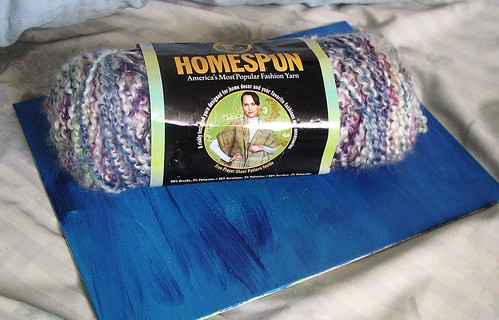
1. Pick your yarn! You want a bulkier yarn, ideally one that is a thick single plied with thread. You can use whatever yarn you want really, but the thicker the singles are, the easier it is to separate and card.
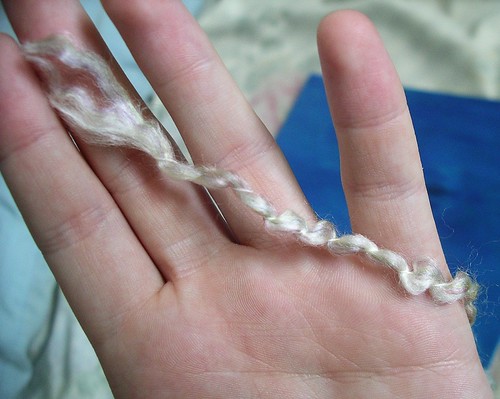
2 - Look at yarn. This yarn has a fluffy part (the part I want) spun around strong thread (in the middle), and plied with a single white thread (which is visible here).
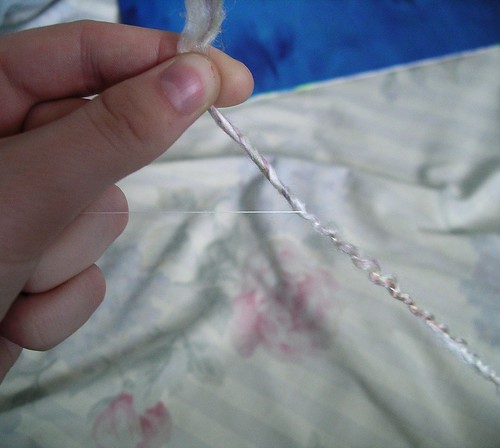
3 - Un-ply. Pull apart the yarn: here I'm starting with the thread the fluffy party was plied with. The thread I'm taking out is visible from the outside of the yarn.
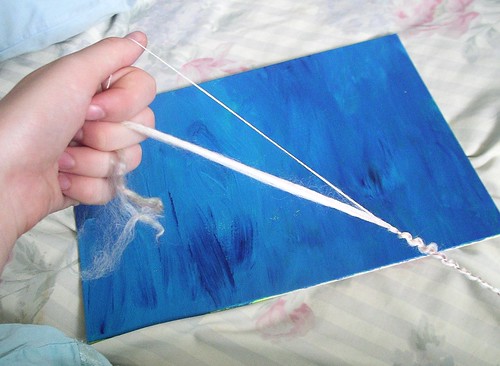
4 - Remove the core. Remove the strong core of the fluffy part. Not all yarns will have this, but this brand does. You need to hunt for strong, thread-y parts in the fluff, then pull them out.
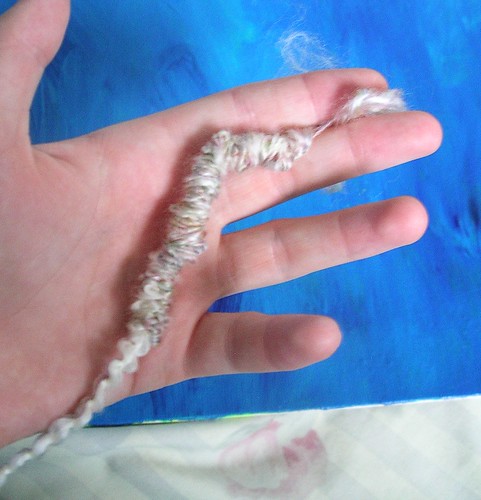
5 - After removing the core. The yarn will probably bunch up like this - that's fine, just straighten it out so you can see where to break the yarn.
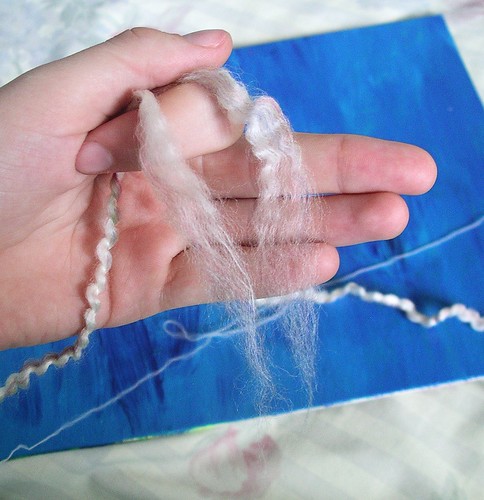
6 - Break the yarn. Pull off the yarn that has had the thread-y parts removed. If you can't pull it apart easily, there may still be thread in it, try moving closer to the end. In this picture, the yarn on the left still has thread-y bits, the yarn on the right has all the thread-y bits removed.

7 - Different parts.
A - These are the threads from the middle of the yarn and the thread that was plied with the fluffy bit.
B - The fluffy bit of the yarn - this is the part you want! You could probably spin this fiber as is, but it would be trickier to draft, so it would be harder to get different weights.
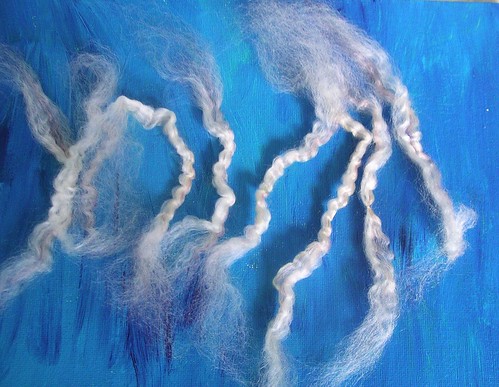
8 - Break fluff into smaller parts. You're going to be separating the fluffy fibers, so break them into smaller parts. They're much easier to pull apart when they're this size.

9 - Pull apart fluff. Separate the fibers in each section.
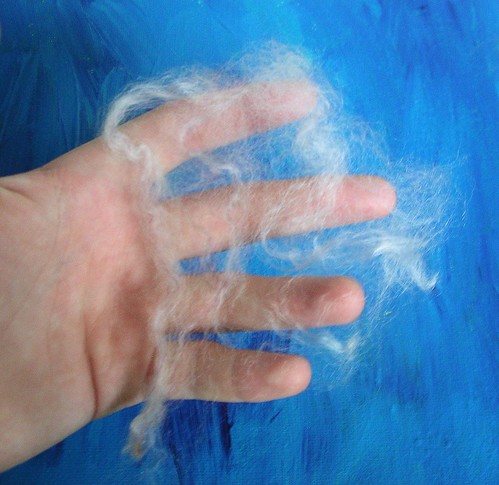
10 - Separated fluff. This is what the fluff should look like when it's been separated.
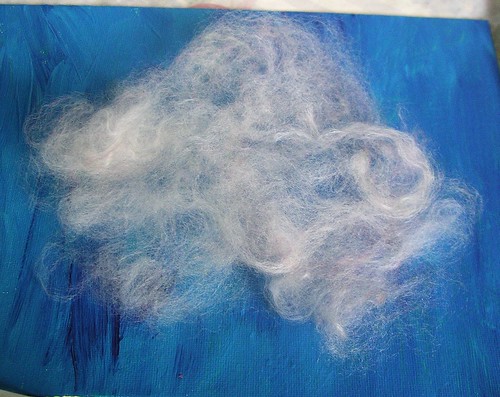
11 - All the fluff separated. Put all the separated fluff in a pile, you're going to card it next! You actually get a decent amount of fiber from not much yarn, this is all the fiber from B in step 7.
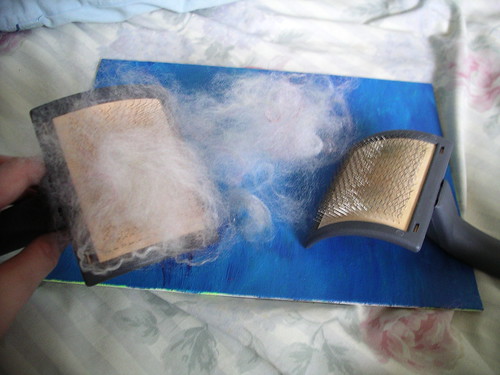
12 - Card fiber. This is a pretty good guide to carding fiber. If you can't afford hand carders (they're pretty expensive), you can use two dog brushes! The carders in the photo are dog brushes.
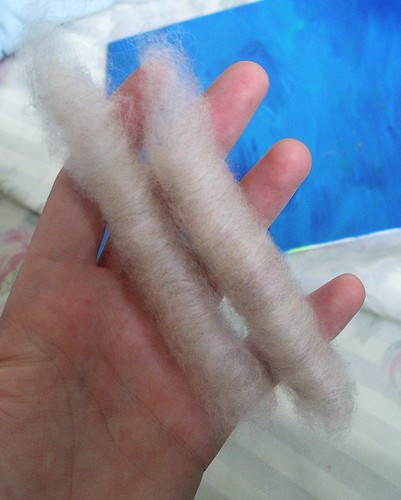
13 - Rolags. The fiber has been carded into rolags, ready for spinning.
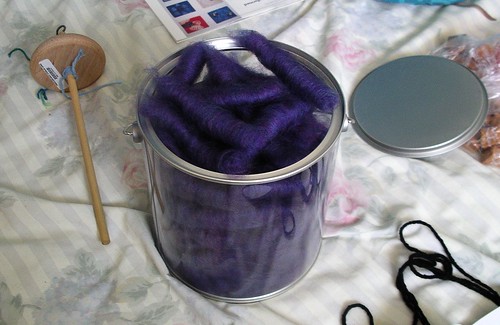
14 - Bucket of rolags. These are purple rolags from some yarn I took apart previously. Ready for spinning!

15 - Spin the Fiber. Spin the fiber from the rolags! This is some more reclaimed fiber I'm in the process of spinning.
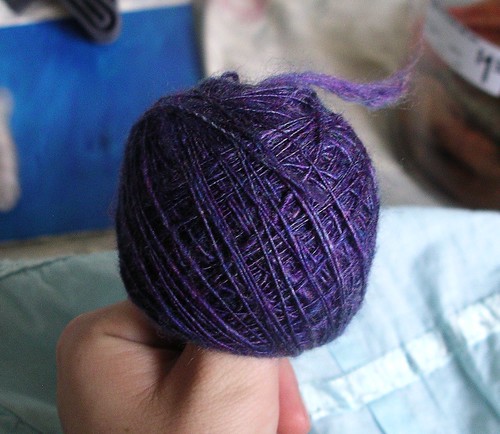
16 - Yarn! The finished product! This is the purple laceweight yarn from the rolags in step 14. Now I have a usable amount of yarn from a tiny amount left over!
I hope someone finds that helpful! Spinning is fun, and this is a great way to try out small amounts of different fibers.
The nylon thread wrapping Lion Brand _Homespun_ acts much like the binding thread used in brushed and boucle mohair. It *is* a frustrating yarn at times, and I also agree that it produces a fabric with a lovely hand and drape.
ReplyDelete